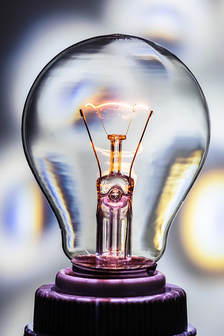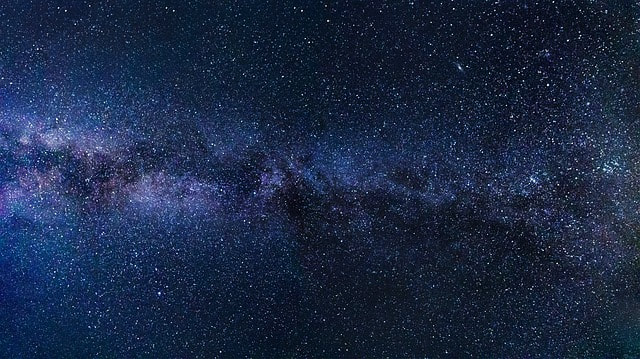To go in the dark with a light is to know the light.
I’ve been sinking into the darkness this December, really relishing in the long nights that mark the approach of solstice. At this time of year, the earth tilts so that the northern hemisphere is the furthest it can be from the sun, making the nights long, and they will get longer until the winter solstice, which is the longest night of the year. After the solstice the earth tilts back, nights get shorter and the days get longer, until the summer solstice, the longest day of the year. Throughout time the winter solstice has been celebrated and ritualized for the “return of light,” with hope, warmth and comfort in its wake.
Although, this post is about the dark. It is about the time before the light returns. It is the state we are in, when the light comes; but it’s not there yet. It’s dark. My obsession, nay intention, about sinking into darkness is in direct response to an internal longing for restfulness and reflectiveness that I get at this time of year...It’s also a counter move against the constant positive spin our culture puts on everything. As Wendell Berry said in the poem above, to know the dark, go dark. I’m going dark.
What about the mysterious? What about that which cannot be measured or quantified? We are forgetting that we are human beings, not a slew of numbers and statistics. We are losing our ability to be in relationship with the unknown, even though we spend most of our lives in this space.
Even within the modern culture of yoga, there is a skew towards focusing on positivity, and upward movement of the psyche towards betterment and progress. What happens to your practice when you are sorrowful and there is downward movement in your soul and psyche? That yoga, no longer fits. It’s not sustainable. Heck, even the word enlightenment gets so much more positive press than endarkenment.
I first heard of this word, endarkenment, in this 12 minute video by Joan Sutherland called The Radiance of the Dark She says that the universe is made up of 96% dark matter. 96%! That leaves only 4 % light. I found that statistic staggering, in our culture that undeniably values light (literally and metaphorically).
I watched the video a few times and every time I hear something more. It’s become one of my favourites Recently, I jotted down all the words or themes that related to darkness as I watched.I also jotted down word that related to light, for comparison sake. To explain endarkenment, I thought I’d just share my list with you.
Interesting, huh?!
We desperately need to change our relationship to the dark. Understanding the dark isn’t about looking for, or turning on the light switch, it’s about forming a relationship with the dark itself. Darkness is not a mistake. Part of the human condition is suffering...not to minimize it but to encourage you/me/us/world to understand that we are equipped to benefit from the dark. To find support there. Just like a seed draws on the cool, dark, moist soil to prepare to germinate, our inner darkness can be fertile. It needs to be included as part of our healing. Some questions for reflection... How to the words above resonate within you? What happens for you in the dark? What is your particular dream? Does your body experience endarkenment in different ways than your mind? How can you welcome that which you exclude from your life? What deep and dark currents can you rely on? How can you lay back into the mystery and unknowing? Are you willing to participate in your darkness? In Darkness, Sandy ps. I'd love to hear your thoughts and reflections. Leave a comment below!
2 Comments
This summer, I blogged a lot about savasana, and as I was writing each post, I kept coming back to an effect of savasana that is dire medicine for the bereaved - stimulation of the relaxation response. In order to understand the relaxation response, we must also understand the stress response. Part of your nervous system - the autonomic nervous system - governs both the stress and the relaxation response. This part of your nervous system is not under conscious control (you can't control your heart rate increase, or change in blood pressure, for example). The sympathetic nervous system kicks into action in stressful or emergency situations. It governs the ‘fight or flight’ response, which includes reactions such as: pupil dilation, dilation of the airways to make it easier to breathe, increased blood pressure and heart rate, increased blood flow to the muscles, heightened alertness and activity in your brain to help assess situations and make important decisions. The sympathetic nervous system slows all other functions that aren’t related to survival in an emergency situation – digestion, and urine production are two examples. The parasympathetic nervous system is calming and restoring. It helps you recover from the stress response. For this reason, it is called the ‘rest and digest’ nervous system. It slows the heart rate down, decreases blood pressure, stimulates saliva production and movement in the gut, releases bile (all systems related to digestion of food and absorption of nutrients), and eliminates waste. These processes are restorative and healing and help to build our reserves back up after being depleted by periods of stress. This is important to be aware of and practice after the death of a loved one because you are under extreme stress for a prolonged period of time. Further, the underlying stress of bereavement, coupled situational stressors such as moments or anxiety, panic (including flashbacks), and even difficult social situations turn the fight-or-flight response up from moderate to maximum. Recognizing that, and learning ways to create relaxation will be invaluable to healing and resilience. "Your hand opens and closes and opens and closes. If it were always a fist or always stretched open, you would be paralyzed. Your deepest presence is in every small contracting and expanding, the two as beautifully balanced and coordinated as bird wings.” - Rumi These two systems work in tandem to regulate the internal functions of your body. The key word to understand the healthy functioning of the nervous system is balance. A nervous system that is chronically ON is very taxing for the body and mind. A finely tuned nervous system, one that responds to emergencies when needed, but is also able to shift into a more restorative state at other times is crucial. You need both these nervous systems working together appropriately and efficiently.
One aspect of achieving balance in the nervous system is recognizing the value of both nervous system responses. In an interesting TED Talk, Kelly McGonigal speaks about "How to Make Stress Your Friend." In this engaging talk, she describes the stress response - the pounding heart, rapid breathing and sweating - and then offers the audience this re-frame: "What if you viewed them instead as signs that your body was energized, was preparing you to meet this challenge?" She goes on to describe a research study that was done at Harvard University. Basically, they taught participants that their stress response was actually helpful. That the pounding heart was preparing them for action, the faster breathing is getting more oxygen to the brain, and so on. Participants who learned to view the stress response as helpful for their performance were less stressed, less anxious, more confident, on their exam. Fascinatingly, their physiological stress response changed. Granted, there is a HUGE difference between preparing for a test and dealing with the death of an important person in your life. Huge. This is where the art of awareness and discernment comes into play. In some cases, your stress response may be trying to serve a purpose - to prepare you to meet a challenge, or to give you burst of energy to protect yourself in some way. The stress response, however, isn't meant to be activated all the time. This is where yoga comes in... Although the functioning of autonomic nervous system is not under your conscious control, aspects of a yoga practice are, which have a "back-door" approach to the nervous system. Richard Faulds says, "When you do yoga - the deep breathing, the stretching, the movements that release muscle tension, the relaxed focus on being present in your body - you initiate a process that turns the fight or flight system off and the relaxation response on. That has a dramatic effect on the body. The heartbeat slows, respiration decreases, blood pressure decreases. The body seizes this chance to turn on the healing mechanisms." In periods where your stress is prolonged and intense, developing a relaxation practice is invaluable. The quote above, says it all - yoga is a practice that balances the nervous system. The beautiful thing about yoga is that you can come at it from many different directions. Here are some ways into your parasympathetic nervous system:
Savasana, The Art and Science of Relaxation Savasana is a Practice Savasana: Tips and Techniques Savasana and Sleep |
AuthorSandy Ayre Categories
All
Archives
December 2022
|
Classes
|
Helpful Info
|
|



 RSS Feed
RSS Feed
